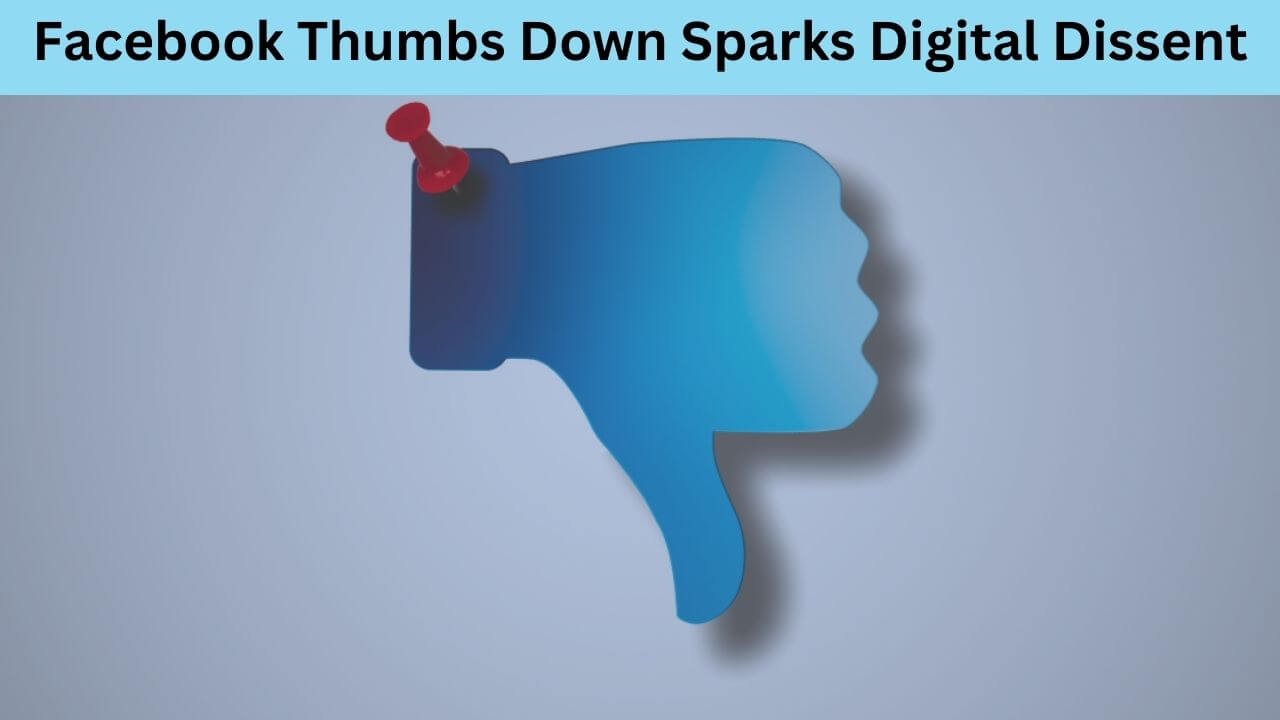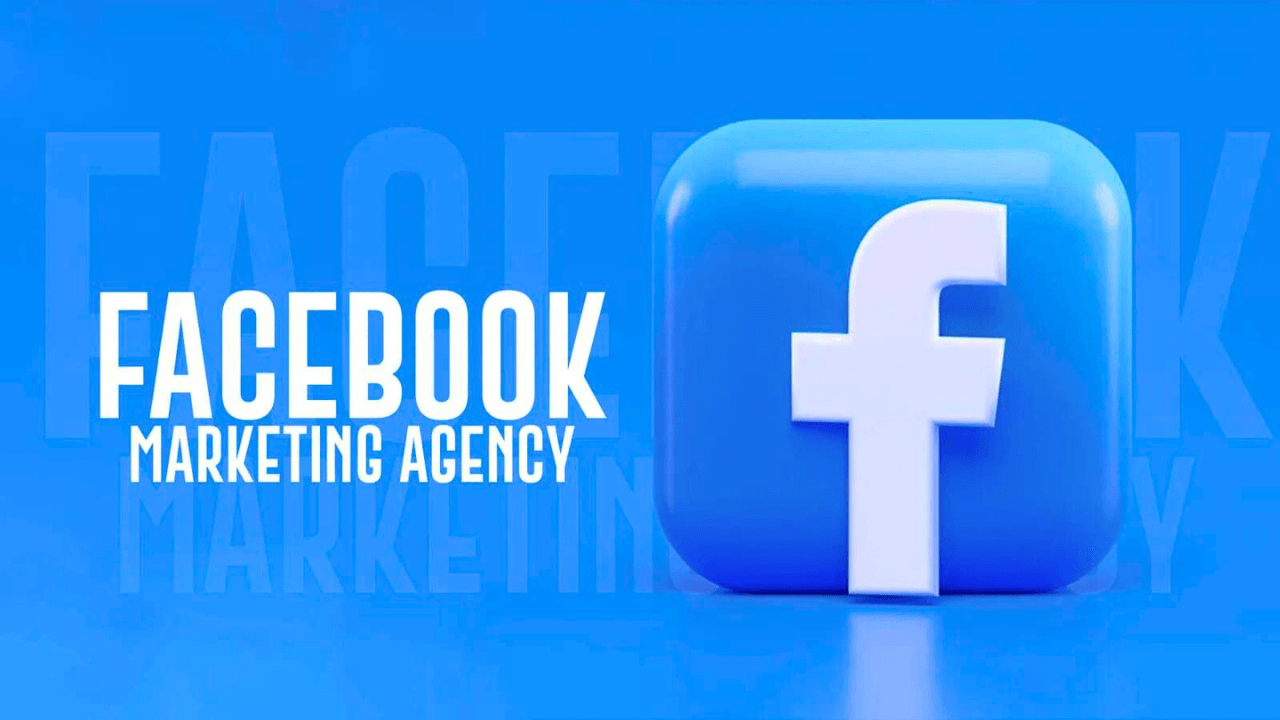In the vast landscape of social media reactions, where a sea of thumbs-up symbols affirmatively sails across digital content, a quiet rebel emerges, the elusive Facebook Thumbs Down. It’s the enigmatic icon that speaks volumes in silence, a digital whisper amid the din of likes. In a world often painted in shades of approval, this downward-pointing digit dares to defy the status quo, providing a nuanced expression for those who seek a more complex palette of emotions. Beyond binary affirmation, the Thumbs Down stands as a unique cipher, an emblem of dissent, or a subtle acknowledgment of life’s intricacies.
How does the Facebook Thumbs Down redefine digital expressions?
The introduction of the Facebook Thumbs Down feature marks a significant shift in the landscape of digital expressions, challenging the traditional binary nature of online feedback. In this era of social media, where a simple ‘like’ or ‘thumbs up’ has been the standard endorsement, the inclusion of a negative reaction expands the spectrum of user engagement. This move is reminiscent of Reddit’s upvote and downvote system, signaling a departure from mere affirmation towards a more nuanced portrayal of sentiments.
Facebook, as a platform, has recognized the need for diversified expressions beyond positivity, acknowledging the complexities of real-world emotions. Studies on online behavior, such as the work of Acquisti and Gross in “Imagined Communities: Awareness, Information Sharing, and Privacy on Facebook” (2006), suggest that users seek richer means to convey disagreement or dissatisfaction. The Facebook Thumbs Down, by offering a dissenting option, aligns with these evolving user expectations, aiming to enhance the authenticity of virtual interactions.
However, as with any innovation, challenges loom on the horizon. The potential misuse of the Thumbs Down feature and its impact on mental health have sparked debates. Considering lessons learned from the introduction of the ‘dislike’ button on YouTube, as discussed in Chen et al.’s “The Power of the Like in Adolescence: Effects of Peer Influence on Neural and Behavioral Responses to Social Media” (2016), it becomes crucial for Facebook to implement robust safeguards and educational measures.
In essence, the Facebook Thumbs Down not only redefines how we express ourselves online but also invites a broader conversation about the responsibility that comes with introducing new dimensions to digital interactions. As users adapt to this enhanced feedback system, the dynamics of virtual communication undergo a transformative evolution, urging us to explore the delicate balance between freedom of expression and fostering a healthy online environment.
What cultural shifts does the Facebook Thumbs Down phenomenon signify?
Facebook Thumbs Down marks cultural shifts, redefining online expression. It signifies a profound change in how users engage digitally. This phenomenon goes beyond a simple addition to the platform; it reflects and shapes broader cultural trends in digital communication.
Here are our Cultural Shifts Signified by the Facebook Thumbs Down:
- Nuanced Expression: The introduction of the Thumbs Down feature acknowledges the need for more nuanced ways of expressing sentiments beyond the binary spectrum of approval or disapproval. It reflects a cultural inclination towards embracing complexity in virtual interactions.
- Authenticity Over Positivity: The Thumbs Down challenges the prevailing notion that online spaces should primarily be positive and uplifting. This cultural shift suggests a growing recognition of the importance of authentic expression, even if it includes dissent and disagreement.
- User Empowerment: By providing users with a tool to express dissatisfaction or disagreement, Facebook empowers individuals to shape their digital experiences actively. This cultural shift signifies a move towards more user-centric platforms, where individuals have a say like online discourse.
- Reflection of Offline Social Dynamics: The Thumbs Down mirrors real-world communication where people often express disagreement or disapproval. This cultural alignment suggests a desire for online spaces to better emulate the richness and diversity of face-to-face interactions.
- Responsibility in Online Discourse: The cultural shift towards incorporating a negative reaction button implies a collective acknowledgment of the responsibility that comes with expressing opinions online. Users and platforms alike are prompted to consider the impact of their digital interactions on broader societal discourse.
In essence, the Facebook Thumbs Down phenomenon signifies a dynamic cultural evolution in how we communicate and engage with one another in the digital age, emphasizing authenticity, empowerment, and a more reflective representation of the complexities inherent in human expression.
Can a single Facebook Thumbs Down gesture speak volumes of digital dissent?
Facebook Thumbs Down, a game-changer in social media, provides a powerful means for users to express digital dissent succinctly. This seemingly simple gesture holds the potential to convey complex sentiments and reshape the dynamics of online communication.
Let’s explore how a single Thumbs Down on Facebook can speak volumes in the realm of digital dissent:
1. Efficiency in Expression
The Facebook Thumbs Down condenses dissent into a concise gesture, providing a quick and efficient way for users to communicate disagreement without the need for elaborate comments or explanations.
2. Visual Impact
Unlike textual comments, the visual impact of a Thumbs Down is immediate and universally understood. This visual cue has the potential to resonate strongly, making it a potent tool for expressing discontent in a scroll-heavy digital environment.
3. Amplification of Minority Voices
In situations where dissenting opinions may be in the minority, the Thumbs Down empowers individuals who might otherwise hesitate to voice their disagreement openly. It acts as a silent amplifier for dissenting voices within the digital crowd.
4. Non-Verbal Tone Setting
The use of the Thumbs Down sets a tone without the need for written words, allowing users to convey their emotions non-verbally. This aspect is particularly impactful in contexts where language barriers or brevity are paramount.
5. Collective Symbolism
As users adapt to the Thumbs Down as a symbol of dissent, it gains collective significance. The gesture transforms into a digital emblem representing a shared sentiment, fostering a sense of community among those who utilize it.
6. Potential for Constructive Critique
While a Thumbs Down is often associated with disagreement, its nuanced usage can also signify a call for improvement. Users can employ it as a form of constructive critique, urging content creators or platforms to enhance their offerings.
Facebook Thumbs Down transcends its apparent simplicity, becoming a multifaceted tool that can communicate dissent in a variety of contexts. Whether swiftly disagreeing or urging improvement, this digital gesture speaks volumes in the intricate language of online interactions.
Does the Facebook Thumbs Down defy conformity or spark debate?
The introduction of the Facebook Thumbs Down feature has prompted a dual discourse, inviting contemplation on whether this digital gesture defies conformity or serves as a catalyst for robust debate. As users grapple with its implications, the Thumbs Down becomes more than a mere symbol; it becomes a dynamic force shaping the contours of online interaction.
Here’s a delve into how this feature, intended for expressing dissent, navigates the delicate balance between defiance and debate:
1. Defying Conformity
The Thumbs Down challenges the conformity of positive reinforcement prevalent in social media, providing users with a dissenting option that disrupts the established norm of only expressing approval.
2. Cultural Shift in Digital Expression
Its introduction signifies a cultural shift towards acknowledging diverse opinions, resisting the conformity of a singular narrative, and embracing the richness of varied perspectives.
3. Empowering Dissent
By offering a tangible way to express dissent, Thumbs Down empowers users to deviate from the norm, fostering a culture where disagreement is recognized and respected.
4. Encouraging Critical Thinking
The presence of a dissenting option encourages users to engage critically with content. It sparks a shift from passive consumption to active participation, breaking the conformity of passive approval.
5. Symbolic Defiance
Symbolically defying the positivity norm, Thumbs Down lets users express dissatisfaction without conforming to constant affirmation.
6. Stimulating Constructive Debates
Instead of stifling dialogue, the Thumbs Down can catalyze meaningful debates. Users may use it as a starting point for discussions, challenging ideas, and fostering a more intellectually diverse digital space.
7. Navigating the Fine Line
The Thumbs Down walks a fine line between defiance and constructive debate. Impact hinges on user intention, be it a rebellious act against conformity or an invitation to conversation.
Essentially, Facebook Thumbs Down embodies a nuanced dance of defiance and debate, offering users a choice to challenge or converse.
Read more: Gon Forum Sites: Community Building and Networking
Will the Facebook Thumbs Down ecosystem evolve with the addition of disapproval?
The incorporation of the Facebook Thumbs Down feature marks a transformative juncture in the platform’s ecosystem, raising intriguing questions about the potential evolution of digital interactions with the addition of a dedicated disapproval mechanism. As users adapt to this novel dynamic, Thumbs Down can shape a more intricate and responsive ecosystem, redefining the way sentiments are expressed in the digital realm.
Let’s explore the multifaceted ways in which the Facebook Thumbs Down ecosystem might evolve with the introduction of disapproval:
1. Diversification of Feedback
The Thumbs Down introduces a new dimension to user feedback, expanding beyond the binary of approval or neutral reactions. This diversification allows for a more nuanced understanding of user sentiments.
2. Impact on Content Creation
Content creators will need to navigate the evolving landscape, considering the potential impact of Thumbs Down reactions on their work. This may foster more thoughtful and engaging content to avoid disapproval.
3. User Behavior Adaptation
Over time, users may adapt their online behavior in response to the Thumbs Down, influencing the type of content they engage with and how they express disagreement or disapproval.
4. Algorithmic Adjustments
The introduction of the Thumbs Down may lead to algorithmic adjustments by the platform, as it seeks to understand and cater to the evolving preferences and sentiments of its user base.
5. Community Norms Redefined
The Thumbs Down has the potential to reshape community norms by establishing new standards for acceptable content and conduct, fostering a collective understanding of digital etiquette.
6. Curation of Online Discourse
As users incorporate the Thumbs Down into their interactions, online discourse may undergo a shift towards a more curated and refined environment, where dissent is acknowledged and addressed.
7. Mitigation of Echo Chambers
The thumbs-down feature, if used responsibly, could contribute to breaking echo chambers by allowing dissenting voices to be heard, challenging prevailing narratives, and promoting a more diverse exchange of ideas.
8. Influence on Mental Well-being
Thumbs Down prompts platform reevaluation of users’ well-being, requiring measures to mitigate negatives and promote online health.
The introduction of the Facebook Thumbs Down feature has the potential to reshape the platform’s ecosystem in profound ways. Thumbs Down alters behavior, and content creation, influences algorithms, and shifts community norms, setting the stage for dynamic evolution.
Did the Facebook Thumbs Down feature impact your social media habits?
The integration of the Facebook Thumbs Down feature has not only stirred conversations among users but also prompted a personal reflection on the impact of this new tool on social media habits. As an observer of the digital landscape, the Thumbs Down introduces a layer of complexity to online interactions, prompting a reconsideration of how users engage with content and express sentiments.
Here’s a list-style exploration of the potential effects of the Facebook Thumbs Down on social media habits:
1. Thoughtful Engagement
The Thumbs Down encourages more thoughtful engagement with content, as users may now consider the option of expressing disagreement or disapproval beyond a simple scroll or ‘like.’
2. Selective Interaction
With the Thumbs Down as an additional expression, users may become more selective in the content they engage with, avoiding the risk of disapproval or seeking out posts that align with their views.
3. Conscious Content Creation
Thumbs Down prompts content creators to consider crafting positively resonant content, encouraging constructive discussions over dissent.
4. Increased Dialogue
Thumbs Down’s presence fosters dialogue, encouraging users to turn disagreements into opportunities for meaningful engagement.
5. Impact on Mental Well-being
Thumbs-down potential influences users’ well-being, creating awareness that posts may receive expressions of disapproval. This may lead to a more cautious approach to online sharing.
6. A shift in Interaction Patterns
A thumbs-down introduction may shift interaction patterns, encouraging users to diversify expressions beyond the conventional ‘like.
7. Community Dynamics
Over time, the Thumbs Down could shape the dynamics of online communities, influencing how users communicate and interact within specific groups or forums.
8. Adaptation to User Feedback
Social media platforms, including Facebook, may adapt their features and algorithms based on user feedback related to Thumbs Down, influencing the overall user experience.
9. Balancing Positivity and Critique
Users may find themselves navigating a balance between fostering positivity and expressing critique, as the Thumbs Down becomes a tool for nuanced digital conversations.
Facebook Thumbs Down has the potential to impact social media habits by encouraging more thoughtful engagement, influencing content creation strategies, and fostering a dynamic landscape where users navigate a spectrum of expressions beyond the traditional positive feedback.
Are we ready for a Facebook Thumbs Down option in social interactions?
The prospect of a Facebook Thumbs Down option in social interactions raises compelling questions about the readiness of users to embrace this new facet of digital expression. As the platform contemplates introducing a feature dedicated to signaling disapproval, users are prompted to consider the implications for online discourse, community dynamics, and the overall tone of virtual interactions.
Here’s a list-style exploration of the factors that contribute to the readiness or hesitancy toward the Facebook Thumbs Down option in social interactions:
1. Cultural Preparedness
The acceptance of the Thumbs Down hinges on the cultural preparedness of users to move beyond the convention of purely positive affirmations and embrace a more diversified range of digital expressions.
2. Impact on Mental Well-being
Users’ readiness may be influenced by considerations related to mental well-being, as the introduction of a Thumbs Down raises concerns about potential negativity and its effects on the online environment.
3. Desire for Nuanced Expression
If users feel limited by the existing options for expressing sentiments, the Thumbs Down could be welcomed as a tool for more nuanced and authentic digital communication.
4. Education and Understanding
Readiness links to education from the platform on Thumbs Down’s purpose, aiding users in navigating effectively.
5. Concerns about Misuse
Hesitancy may arise from concerns about the potential misuse of the Thumbs Down, as users worry about the feature being employed for trolling or contributing to a more negative online atmosphere.
6. Community Norms and Expectations
User readiness hinges on community norms within online groups, where diverse perspectives shape opinions on Thumbs Down.
7. Evolution of Online Discourse
Users assess readiness based on Thumbs Down’s perceived impact on discourse evolution, pondering if it enhances or introduces discord.
8. Feedback Mechanism Efficacy
The readiness to embrace the Thumbs Down is linked to users’ confidence in its efficacy as a feedback mechanism, whether it genuinely adds value to the quality of interactions and content evaluation.
9. Platform Trust
User trust in the platform’s responsible Thumbs Down management is crucial; concerns about bias or privacy impact acceptance.
10. User Empowerment
Readiness could be driven by the perception of the Thumbs Down as a tool that empowers users to express dissent and shape the digital environment actively.
Readiness for Facebook Thumbs Down in social interactions is nuanced, shaped by cultural dynamics, user perceptions, and evolving online communication. The feature prompts collective reflection on digital interaction direction, balancing positivity and authentic disagreement expressions.
Conclusion:
In the realm of social media, the prospect of a Facebook thumbs-down introduces a nuanced layer to user expression. While it may provide a means for more authentic feedback, its implementation requires careful consideration. The impact on mental well-being, potential misuse, and ethical concerns demand thoughtful evaluation. Striking a balance between constructive criticism and discouraging negativity becomes pivotal. As we navigate the evolution of online interactions, the quest for a more comprehensive feedback system continues. The future may lie beyond thumbs-down, fostering a digital space promoting empathy, understanding, and productive dialogue.




